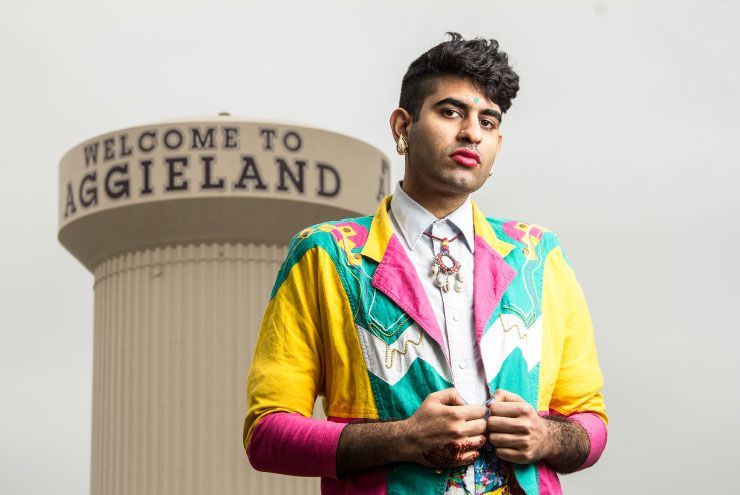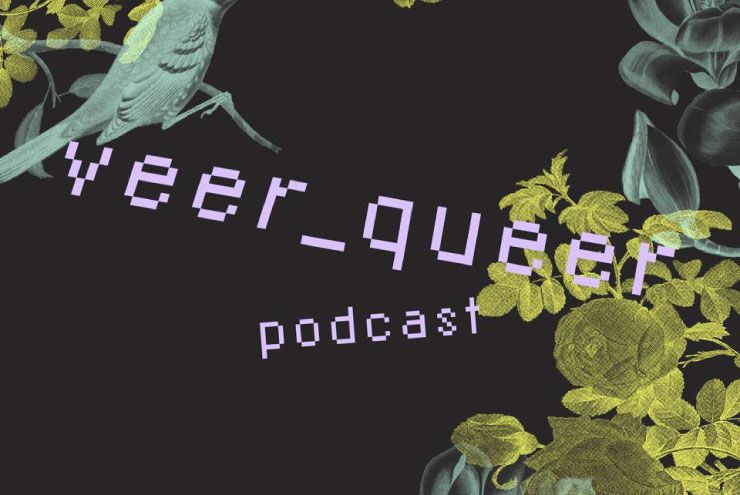By Dr. Laura McGuire
It’s Pride month! And with the anniversary of the Stonewall Riots right around the corner, we’re seeing a hot debate around rainbow washing and performative allyship for profit by major corporations.
Yet, one place remains, more often than not, unwashed by rainbows—the church. As frustrating as rainbow capitalism can be, it is at least an invitation for dialogue. If you are willing to rebrand for 30 days each summer, then perhaps we can discuss what support for the LGBTQ community looks like long-term. Many faith communities, on the other hand, often offer no visible allyship, performative or otherwise; their message is explicitly clear—there is no door for this discussion to enter.
Billy Porter stated in a recent interview that the first thing queer people lose when they come out is their spirituality—a sentiment I strongly connect with. Being queer is still too often portrayed as antithetical to being a person of faith. Choosing between God and embracing one’s own self is a common choice that LGBTQ people must make. We are beaten with the Clobber Verses until our souls are raw and, even if “tolerated,” we are only allowed to come in as “sinners,” not as equals. These messages are often so strong that they block out the possibility of seeing God in ourselves or believing in a different version of our faith’s history.
Yet, if we start to chip away at what we have been told about God, we quickly see that homophobic/transphobic narrative begins to dissolve.
In reality, the first human in the Biblical creation story was not seen as a cisgender man until recent theological history. Early Rabbinical scholars regarded Adam as what would today be considered non-binary or intersex. These scholars shared a perspective that Adam was an embodiment of the gender spectrum and an androgenous being. Genesis tells us that God created us “male and female”; however, this language best reflects a merism, or a statement intended to demonstrate a spectrum not a binary.
In the first centuries of Judaism, there were at least six genders that played different roles during holiday celebrations. Rabbi Meyer explains, “In fact, and strikingly, our Jewish legal tradition identifies no fewer than six distinct ‘genders,’ certainly assuming as normative the male and female, but including as well designations which we now refer to as ‘intersex’ identities. To use the Hebrew terms: androgynos, one who has both male and female characteristics, the tumtum, one whose biology is unclear, the aylonit, who identified as female at birth, but at puberty, develops male characteristics, and the saris, who appears as male at birth, but later takes on more typically female biology.”
Additionally, in the Jewish mysticism of Kabbalah, we see the concept of transness in the writings on reincarnation. It is common to find examples of male souls being born into female bodies and vice versa. Some Rabbis even suggest that Jacob’s daughter, Dinah, and Abraham’s son, Isaac, were transgender. Other research informs us that even Rabbinical laws that supposedly punished dressing outside of one’s assigned gender were only intended to address people who used disguises to commit crimes.
Even Jesus can potentially be seen as a gender-nonconforming figure. Paul says that Christ was the “second Adam,” and if Adam was a gender-fluid being, then what new understanding does this give us of Jesus?
For example, Jesus has long been examined for his rejection of the gender norms of his time. He was a Rabbi who didn’t marry—one of the basic requirements for the role. He gave women leadership roles, addressed them directly, and made them the original evangelists of his resurrection—all of which was downright unheard of in his world and time in history. Ultimately, he was intentionally choosing not to conform to the gender norms of his time—in all aspects of his work and leadership—which beautifully aligns with this understanding of Adam’s theyness.
Further, Islamic scholar Muhsin Hendricks shines light on how Islam can be understood to be radically queer inclusive. He writes, “Islam, at its very core, does not condemn non-heterosexual sexual intimacy. Instead, it is embraced as part of a divine plan.” The Prophet Muhammed (pbuh) never condemned any LGBTQ identity, but instead focused on uplifting those who had been oppressed (Quran 5:8; Quran 4:75).
God is not beyond gender but within all aspects of gender—around, between, beneath, before, and inside gender. God is gender-full not gender-less. We do not need to pretend God is just cisgender, or one gender, or no gender. Instead, they reflect all genders in their creations. If you don’t see God’s gender-expansiveness in your faith community, it is not because God has no room for the gender spectrum; it is because our faith traditions have erased the transness of God. Here is my good news proclamation—this month and every month, we can choose to reclaim our rightful space in faith, and that is good news for us all.








Andrea
June 29, 2021 at 9:45 AMI really relate to what you said, that God is “gender-full” or all aspects of gender, ALL. Definitely gender fluid!!
I’ve just recently started seeing God as ‘they’ – even though growing up I always noted each moment (within the Bible) I heard God describing themselves within the feminine energy (since I identify as female, I longed to find any reference to female-ness). Learning about all the gender types puts language to this longing within myself. Thank you for that awareness.